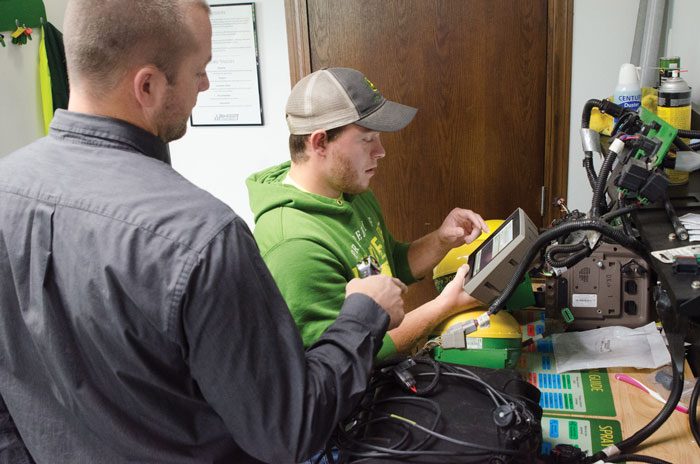In May, we asked Precision Farming Dealer readers to share the best and worst precision agriculture-related idea, practice, technology, etc., implemented at their dealership in the last 2 years and explain what went well or what went wrong. Here are some of the most informative responses.
“Our best idea was adding a technology product specialist. This person works with customers to make sure they have a great experience with equipment; works with the sales team to ensure equipment ordered works with customers’ implements and on subscription sales, unlocks and other technology parts and pieces; and works with the service team helping diagnose issues.”
— Name Withheld
“DigiFarm cellular RTK is our best idea. It has a longer range than radio RTK, no need to change channels/frequencies, and it’s been very reliable.
“Not increasing the frequency of precision ag training is our worst practice. We struggle with not having enough knowledge of precision ag displays, receivers, components and systems spread throughout the dealership.”
— Zach Carpenter, IS Supervisor/Agronomist, 4 Rivers Equipment, Greeley, Colo.
“Developing a digital solutions arm of the team increased our engagement with customers…”
“CenterPoint RTX, Trimble’s SBAS correction, is our best idea. Zero setup of base stations is needed, and there’s no need to worry about cellular service for NTRIP. CenterPoint RTX is destined to replace GBAS RTK.
“Needing to bill out my time as a precision farming specialist for EVERY precision interaction I have with customers is the worst. I’m basically not able to give out ‘free advice’ or information on the technology. This creates a paywall for customers already weary of the technology and its implementation.
“During the WAAS 138 to 135 changeover, I had a lot of calls along the lines of ‘My GPS doesn’t work. What do I do?’ Instead of walking them through RDI on the phone, I had to create a work order, travel out to the end user, change the setting in person, then travel back to the shop — all while charging field rate because ‘you need to be billed out more.’”
— CNH Level 3 Precision Farming Specialist at a Central Montana Dealership
“Our best idea was Residue Commander, a hydraulic system to adjust trash whippers up and down. It fits most trash whippers, has no air leaks to stop you in the field, is fully adjustable from the cab and only needs one harness to run from the back of the planter.
“Soil probes have been our worst idea. They were a product that needed attention when we were still working on some planters and sprayers. Because of the timing of these products, we ended up testing the patience of some of our growers.”
— Lance Larsen, Innovation Center Operations Manager, Agtegra Cooperative, Aberdeen, S.D.
“We struggle with not having enough knowledge of precision ag spread throughout the dealership…”
“Applied data seeding prescriptions are our best idea because they took customers’ existing data and showed them the value of knowing what their fields can produce.”
— Name Withheld
“We have started an AEF service council, where agricultural dealers and OEM service people talk about ISOBUS and their typical issues and experiences with it. In addition, information about the AEF ISOBUS database and new functions is provided. It’s an exchange between different companies to identify and solve market issues in regard to ISOBUS and an exchange of precision ag data and data formats.”
— Name Withheld
“Developing a digital solutions arm of the team increased our engagement with customers. We become a real business partner, not just an iron supplier. This is a whole farm business approach.
“Our worst idea was employing a recent graduate agronomist who didn’t have the maturity, drive and motivation that was expected.”
— Name Withheld
“Winter servicing is our best practice. It increases revenue in low season, improves reliability in high season and allows for upselling while on the farm. Our worst idea has been remote support. Our product range doesn’t have an effective remote support facility. We have tried to make one work, but it comes with too many pitfalls.”
— Gavin Ludkin, Technology Manager, SymAgri in the United Kingdom



![[Technology Corner] Helping Your Customers Determine Which Technology is Right for Them](https://www.precisionfarmingdealer.com/ext/resources/2025/03/26/Helping-Your-Customers-Determine-Which-Technology-is-Right-for-Them.png?height=290&t=1743084621&width=400)


